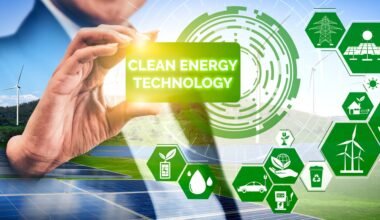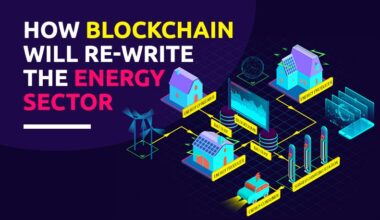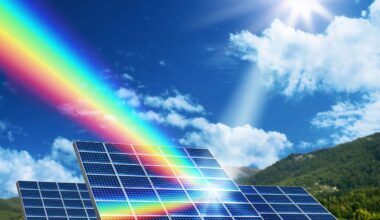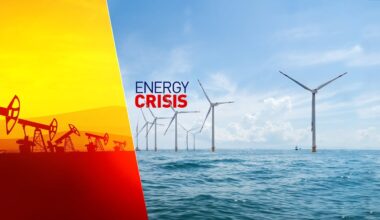Outline
How Wind Energy is Revolutionizing the Global Energy Market – Trends and Future Prospects
-
Focus: Introduce topic and set stage; include focus keyword
Introduction
-
Overview of rising demand for clean power
-
Background on renewable power and market dynamics
-
Early mention of focus keyword
Promise of Mastering Clean Power Investment
-
Vision to invest like a seasoned expert
-
Benefits of adopting advanced energy tech
Global Market Overview
-
Explanation of global energy market shifts
-
Role of renewables in modern supply
-
Comparison with conventional power solutions
Basics of Wind-Powered Generation
-
Definition of wind-powered generation
-
Core technology behind turbines converting kinetic energy
-
Importance of wind power in sustainability
What is Wind Energy?
-
Technical explanation of kinetic energy conversion
-
Advantages over fossil-fuel alternatives
Varieties of Wind Projects
-
Onshore projects vs. offshore structures
-
Distributed versus centralized power production
Key Global Trends in Adoption
-
Rapid growth worldwide
-
Factors driving expansion and policy support
-
Investment incentives and market penetration
Step-by-Step Expert Blueprint for Investors
-
Detailed step-by-step instructions for capitalizing on trends
-
Strategic planning to attain market edge
Step 1 – Conducting In-Depth Research
-
Evaluating industry reports, news, and analytics
-
Building personal expertise with reliable data
Step 2 – Analyzing Technological Innovation in Turbines
-
Overview of latest turbine design improvements
-
Impact of automation and digital tools
Step 3 – Selecting Prime Investment Opportunities
-
Criteria for suitable projects and companies
-
Analyzing risk-reward factors in market data
Step 4 – Integrating Smart Systems for Optimized Output
-
Role of digital controls and AI in operation optimization
-
Benefits of smart grid connectivity and data analytics
Step 5 – Monitoring Performance and Adjusting Strategy
-
Techniques for regular performance review
-
Importance of adaptive strategy in a dynamic market
Advanced Tools for Investors and Operators
-
Overview of data platforms, simulation tools, and monitoring apps
-
Using specialized software for decision making
Risk Management and Safety Nets
-
Diversification, insurance, and position sizing
-
Guidelines to minimize risk in volatile market conditions
Avoiding Common Investment Pitfalls
-
Pitfalls due to impulsivity and misinformation
-
Tips to maintain objectivity and discipline
Future Prospects and Market Evolution
-
Forecasts for technology development and cost reduction
-
Potential integration with smart urban systems and emerging economies
Conclusion and Investment Blueprint Download
-
Recap key insights and action points
-
Invitation to download a detailed strategy guide
Frequently Asked Questions (FAQs)
-
FAQ 1: What are the main benefits of wind-powered generation?
-
FAQ 2: How does wind energy compare to solar power?
-
FAQ 3: What are the risks associated with wind projects?
-
FAQ 4: Can individual investors profit from wind energy?
-
FAQ 5: How is technology advancing wind-powered generation?
How Wind Energy is Revolutionizing the Global Energy Market – Trends and Future Prospects
Introduction
In a world facing enormous energy demands and environmental urgency, a shift is underway. Clean power, driven by wind, is transforming global supply. Renewable energy, particularly wind energy, is rapidly gaining traction as societies seek sustainable solutions. Rising energy needs, coupled with environmental awareness, have pushed wind technology to the forefront. Today, we delve into how wind energy is evolving global power and reshaping economic landscapes, offering unprecedented opportunities for investors and policymakers alike.
Early on, it is clear that wind energy stands as a crucial component in modern energy strategies. Its capabilities, benefits, and scalability are turning traditional energy models on their side. For those keen on investing in clean power, a clear understanding of wind energy is essential.
Promise of Mastering Clean Power Investment
Imagine waking up every day with a clear plan to tap into one of nature’s most abundant resources. Visualize possessing the knowledge to invest wisely in projects that produce clean, sustainable power. With expert insights and well-researched strategies, you can transform your approach. This guide offers a detailed blueprint so anyone—from a curious novice to a seasoned investor—can learn to navigate this dynamic market with confidence. Our aim is to share those expert secrets that allow investors to capture superior returns by leveraging cutting-edge renewable energy trends.
Global Market Overview
Across continents, power markets are undergoing significant transformation. Global trends now favor renewables amid rising environmental concerns and economic shifts. Wind energy is emerging as a vital power source that supplies robust, stable electricity. For countries committed to reducing reliance on fossil fuels, wind-powered projects bring both economic benefits and environmental sustainability. In a landscape where traditional sources struggle to meet demand, renewable energy drives progress and innovation.
Comparison of wind energy with older alternatives reveals clear advantages. Cost-effectiveness, endless supply, and low environmental footprint position wind as a future-defining resource. Policy incentives and investments in infrastructure further fuel this revolution. Nations around the globe are investing massively, making wind energy a cornerstone of future economic strategy. For additional reliable data, consider exploring insights via the International Renewable Energy Agency (IRENA).
Basics of Wind-Powered Generation
Wind-powered generation is a process that converts kinetic energy from air movement into usable electric power. Essentially, robust turbines capture the energy of moving air and drive mechanical generators. This method provides a sustainable alternative to fossil fuels, reducing both cost and pollutant output. Given its environmental advantages and limitless potential, wind-powered technology represents a significant leap forward in the realm of clean power.
What is Wind Energy?
At its core, wind-powered generation relies on converting energy from flowing air into electricity. Towering turbines, equipped with long, aerodynamic blades, catch kinetic energy and convert it to electrical output. This process not only mitigates reliance on depleting fuel reserves but also curbs emissions, making wind energy a leading force in sustainable innovation.
Varieties of Wind Projects
There exist several types of wind-powered systems:
-
Onshore Projects: These installations operate on land, capturing persistent winds over plains and open fields.
-
Offshore Installations: Situated in seas and large bodies of water, these towers utilize stronger, more consistent winds.
-
Distributed Systems: Smaller, community-based units that supply localized power, often integrated with other renewable sources.
Each approach offers unique benefits and applications, reinforcing wind energy’s role in an integrated renewable future.
Key Global Trends in Adoption
Recent years have witnessed a rapid expansion in wind-powered capacity. Investments in wind projects are surging amid growing policy support and technological improvements. Factors such as declining turbine costs, enhanced efficiency, and favorable regulatory frameworks have made wind energy increasingly attractive. Worldwide, investments in wind systems are at an all-time high, driven by governmental incentives and the urgency to combat climate change.
Data shows that in regions like Europe, North America, and parts of Asia, wind-powered generation is expanding faster than many other renewable options. Such trends inspire confidence in long-term growth potential and encourage both public and private sector investments.
The Pro’s Blueprint for Capitalizing on Renewable Trends
For those aiming to profit from wind energy, a methodical, expert approach is essential. This blueprint details a step-by-step strategy to identify, invest, and manage projects successfully.
Step 1 – Conducting In-Depth Research
A robust strategy begins with thorough research. Meticulously study market reports, policy documents, and technical analyses. Reliable sources such as the U.S. Energy Information Administration (EIA) provide valuable insights into trends and performance metrics. Learn about local wind conditions, turbine specifications, and regulatory incentives. Knowledge is power when it comes to optimizing investments in wind energy.
Step 2 – Analyzing Technological Innovation in Turbines
Technological advancements are revolutionizing the efficiency of wind-powered systems. New turbine designs, enhanced blade aerodynamics, and smart control systems increase output and reduce maintenance costs. Explore recent breakthroughs and case studies that illustrate dramatic efficiency improvements. Many companies integrate digital tools and data analytics to optimize turbine performance. This evolution directly translates to better returns for investors.
Step 3 – Selecting Prime Investment Opportunities
After building technical and market knowledge, identify projects or companies with strong fundamentals. Consider factors like market cap, growth potential, regulatory support, and long-term viability. Use tools such as financial simulators or investment analytics platforms to assess risk versus reward. Compare various projects based on performance metrics and forecasted trends. This step helps in pinpointing investments with sustainable profitability.
Step 4 – Integrating Smart Systems for Optimized Output
Modern wind-powered installations often feature smart systems that boost overall efficiency. These systems include automated monitoring, real-time analytics, and predictive maintenance powered by artificial intelligence. Such integration minimizes downtime and maximizes energy output. Investors should look for projects that embrace these technologies for a competitive edge. For further reading on smart grid integration, refer to resources available at National Renewable Energy Laboratory (NREL).
Step 5 – Monitoring Performance and Adjusting Strategy
No strategy is complete without continual review and adjustment. Use real-time data and performance metrics to refine investment tactics. Periodically evaluate project progress against benchmarks and market trends. Stay engaged with industry forums and expert panels to update your strategy. This iterative process ensures your investments remain aligned with dynamic market conditions.
Advanced Tools for Investors and Operators
Success in wind-powered investments depends on employing robust analytical and operational tools. Many tools cater specifically to the renewable energy sector:
-
Data Analytics Platforms: Leverage software that aggregates market data and forecasts trends.
-
Simulation Software: Use simulation tools to forecast potential output and financial returns based on variable wind conditions.
-
Smart Monitoring Systems: These systems use sensors and real-time data to monitor turbine performance, aiding in timely interventions.
Utilizing such tools can sharpen your decision-making and improve investment returns.
Risk Management and Safety Nets
Investing in wind-powered projects, like any venture, carries risks. Successful investors incorporate a series of risk management techniques:
-
Diversification: Spread investments across multiple regions and projects to mitigate risk.
-
Insurance Products: Consider policies that safeguard against turbine failures or unexpected project delays.
-
Regular Reviews: Conduct periodic performance audits and adjust portfolio allocations accordingly.
-
Financial Instruments: Use derivatives or futures contracts where applicable to offset potential losses.
Strategic risk management is key to safeguarding capital and ensuring longevity in wind-powered investment portfolios.
Avoiding Common Investment Pitfalls
Even the most astute investors can stumble over common pitfalls:
-
Overreliance on Single Data Points: Avoid basing decisions on isolated metrics. A multifaceted analysis is essential.
-
Emotional Investing: Keeping emotions in check during market fluctuations can prevent impulsive decisions.
-
Poor Research: Skipping due diligence increases the likelihood of costly mistakes.
-
Ignoring Regulatory Trends: Keep abreast of changes in policy and local regulations that might impact your investments.
-
Excessive Leverage: While leverage can boost returns, it also raises risk. Use it judiciously.
Identifying and avoiding these missteps will lead to more sustainable and profitable investments.
Future Prospects and Market Evolution
The future for wind-powered technology is bright, marked by continued advancements and expanded market adoption. New turbine models with increased conversion rates are emerging, driving down costs and boosting returns. Additionally, global policy trends continue to favor renewable investments, ensuring that wind-powered projects remain lucrative.
Expect to see further integration of digital tools, such as AI and IoT, to optimize operations. As nations expand their renewable energy portfolios, opportunities for investors will increase. The transition to a smart, interconnected power grid will further enhance the role of wind energy. Ongoing research and development promise even greater efficiencies and larger scale applications worldwide.
Investors who position themselves early and remain adaptive will undoubtedly reap benefits over the long term.
Conclusion and Investment Blueprint Download
Wind-powered technology stands at the forefront of our journey toward a cleaner, more sustainable energy future. Its impressive efficiency, scalable potential, and advanced integration with modern technologies make it a pivotal resource amid global energy challenges.
By understanding market trends, leveraging cutting-edge tools, and adopting a disciplined investment strategy, anyone can capitalize on wind-powered opportunities. Our blueprint, crafted from years of industry insight, offers a roadmap for those seeking to invest like seasoned professionals. Download your detailed blueprint now and join the ranks of successful renewable energy investors.
For further details on renewable energy trends and market research, visit International Renewable Energy Agency (IRENA).
FAQs
1. What are the main benefits of wind-powered technology?
Wind-powered technology offers abundant, sustainable energy production with minimal environmental impact. It lowers operational costs, decreases reliance on fossil fuels, and provides long-term investment returns.
2. How does wind energy compare with solar power?
While both solar and wind power are vital to a green future, wind-powered systems tend to excel in areas with consistent air flows. Solar power might be more suitable in sunny regions, but wind energy can generate power even during overcast conditions.
3. Can individual investors profit from wind-powered projects?
Yes, many investment vehicles allow individuals to invest in wind-powered projects. These include renewable energy stocks, funds, or direct project investments through specialized platforms.
4. What risks are associated with wind-powered investments?
Risks include volatile market conditions, regulatory changes, and technological failures. Diversification and rigorous research can mitigate these risks significantly.
5. How is digital technology, such as AI, improving wind-powered systems?
Digital systems offer real-time monitoring, predictive maintenance, and optimization of turbine performance. They contribute to higher conversion rates, reduced downtime, and overall better efficiency.
Disclaimer: The opinions expressed in this article are for educational purposes only and do not constitute investment advice. Investors should perform their own due diligence before making any investment decisions.






